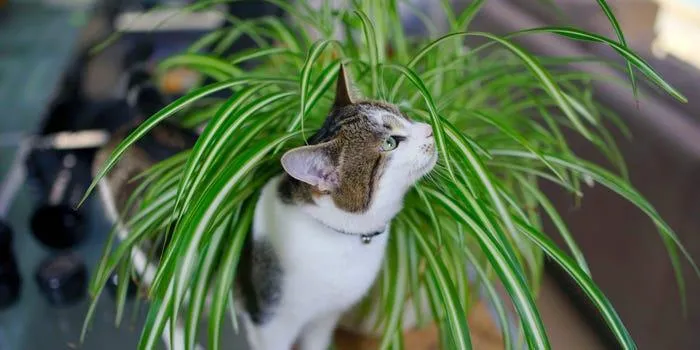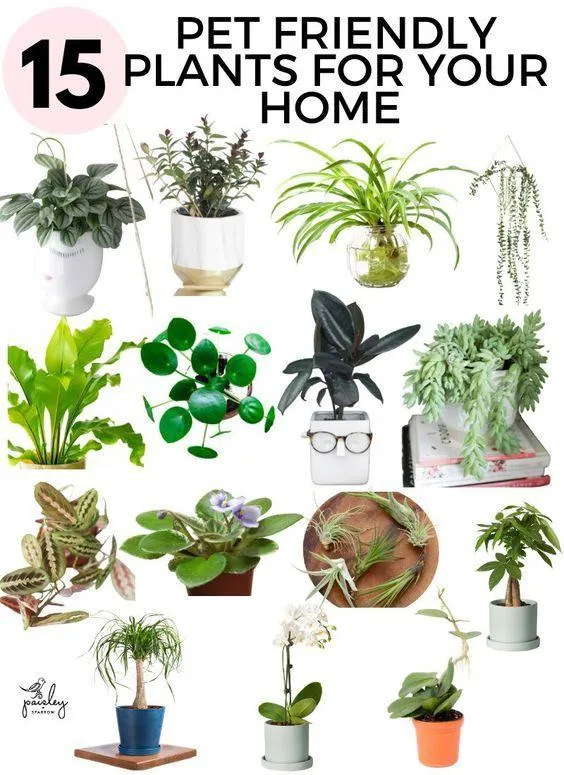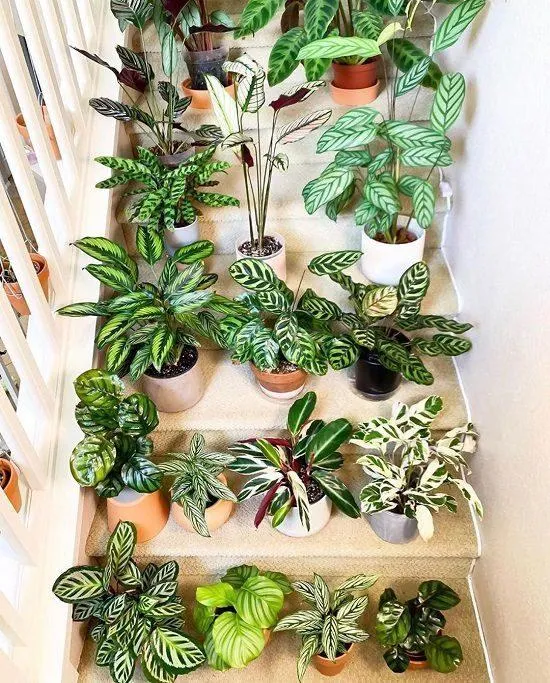Houseplants That Won’t Hurt Fido or Fluffy
As a longtime owner of both houseplants and pets, I’m often asked which plant varieties are safe to have around cats and dogs. While many flowering and foliage plants can brighten up your home, some common varieties contain substances that could potentially sicken or even harm pets if ingested. In this article, I’ll discuss some of the plants that have proven non-toxic to our furry family members based on my own experiences caring for plants and pets under the same roof.
Spider Plants
Spider plants (Chlorophytum comosum) top the list of cat- and dog-friendly greenery. Their trailing leaves and spider-like flower spikes make them a beautiful choice for tabletops, shelves, or hanging baskets out of paw’s reach. Despite reports of mild gastrointestinal irritation if eaten in large quantities, spider plants are considered non-toxic. From my experience, pets seem entirely disinterested in their firm, narrow leaves anyway. Their ability to tolerate low-light conditions and infrequent watering also makes them ideal for novice plant parents.
Peace Lilies
Another great low-maintenance option is the peace lily (Spathiphyllum). With their broad, glossy leaves and petite white blooms, peace lilies add a lush look to any room. While they can cause mild mouth irritation, no reports exist of more serious poisoning from peace lilies alone. I once had a cat curiously nibble one leaf with no ill effects. Just be sure to keep them out of reach of dogs, who may be enticed by their plant-like scent. Place them high on shelves or hang from the ceiling for safety.
Snake Plants
Snake plants (Sansevieria trifasciata) take the cake for being virtually impossible for pets to damage thanks to their thick, sword-like leaves. Commonly called mother-in-law’s tongue, snake plants are toxic only in massive doses and have a natural deterrent—their firm texture and faintly bitter taste discourage nibbling. They flourish with neglect, making them a low-maintenance choice for busy pet owners. I even feel comfortable leaving mine within reach of my curious cat, since she shows no interest despite multiple opportunities to taste one.

Chinese Evergreens
Chinese evergreens (Aglaonema) boast an array of colorful, patterned foliage that brightens any room. Their thick, waxy leaves repel chewing, and Chinese evergreens contain no known toxins posing risk to cats or dogs in limited taste trials. I once had a dog knock over a potted Chinese evergreen, but she only gave the scattered leaves a passing sniff before losing interest. For dazzling decorative appeal with pet safety, Chinese evergreens get my thumbs up.
English Ivy
The beloved trailing English ivy (Hedera helix) poses little danger to pets despite containing saponins that can cause gastrointestinal upset in sizable amounts. As a climbing vine, ivy can be trained up walls and out of reach of pets. Its small leaves hold little appeal for casual nibbling, in my experience. While some reports indicate cats may be sickened by nibbling larger quantities, English ivy remains a versatile, low-threat option for hanging planters and draping over shelves.
Other Generally Safe Options
Beyond these top picks, here are some additional plant varieties I’ve found safe around pets based on their biological makeup and anecdotal reports:
- Pothos
- Philodendron
- ZZ plant
- Chinese money plant
- Ponytail palm
- Bamboo palm
- Rubber plant
- Purr-lady’s palm
- Cast iron plant
The key with these is supervising pets and keeping plants high or behind barriers. Most contain calcium oxalate crystals or other compounds that can cause minor mouth irritation but are unlikely to severely sicken without extensive consumption.

Plants to Avoid
While the plants above have proven generally non-toxic to pets in moderate amounts, some common houseplants should be avoided entirely or placed well out of reach. These include:
- Lilies: All types of lilies, like Easter lilies, can potentially cause kidney failure in cats even from ingesting pollen or nibbling foliage.
- Oleander: All parts of oleander shrubs and trees contain cardiac glycosides toxic to pets and potentially deadly in even small amounts.
- Alocasia: The foliage, rhizomes, and flowers of Chinese taro or elephant ear contain insoluble calcium oxalate crystals that cause swelling and irritation if consumed by pets.
- Dieffenbachia: Similar to alocasia, dieffenbachia or dumb cane can irritate the mouth and potentially damage kidneys if ingested by cats or dogs.
- Sago palm: The seed pods and trunk of sago palms contain toxic crystals that can damage red blood cells if consumed by pets.
From my experience caring for both plants and pets, danger arises more from pet curiosity or accidents than toxic intent. Using common sense precautions like placing the above plants in cat-proof hanging baskets or locating any plant babies like lilies out of paw’s reach helps minimize risks. With supervision and a little research, it’s possible for plant lovers and pet owners to coexist harmoniously under the same roof!
Final Thoughts
I hope sharing my experiences caring for both plants and pets has helped shed some light on houseplants that pose minimal risk of harm. But always check with your vet about any plant exposure concerns, because toxicity can vary between individual pets. With the right plant picks and precautions like keeping plants high and behind barriers to deter nibbling, you and your furry friends can enjoy the mental and physical benefits of indoor greenery together safely. Feel free to reach out if you need any other plant or pet advice!
Houseplants Safe for Pets
| Plant | Safety | Notes |
|---|---|---|
| Pothos | Safe | Non-toxic to cats and dogs. Can tolerate low light. |
| Snake plant | Safe | Helpful for filtering indoor air. Tough plant that is difficult for pets to damage. |
| Peace lily | Safe | Will bloom white flowers. Toxic if eaten but tastes bad so pets usually avoid. |
| English ivy | Toxic | Can cause vomiting or diarrhea if ingested. Keep out of reach of pets. |
| Devil’s ivy | Toxic | Toxic if eaten. Can also cause skin/eye irritation. Keep away from pets. |
| Chinese evergreens | Safe | Low light tolerent with colorful leaves. Non-toxic to pets. |
FAQ
-
Are there any houseplants that are toxic to cats and dogs?
Yes, unfortunately there are quite a few common houseplants that can make pets sick if they eat them. Some of the worst offenders are lilies, azaleas, spathiphyllum (peace lily), cyclamen, philodendron, and English ivy.

-
What kinds of plants are generally safe for pets?
Plants that tend to be non-toxic include spider plants, bamboo palm, peace lily, pothos ivy, bromeliad, zebra plant, aloe vera, sansevieria (snake plant), english ivy, and Chinese evergreen. At the same time, it’s always possible for an individual pet to have an uncommon reaction, so it’s best to do research on any particular plant you bring home.
-
Why do some pets eat plants?
There could be a few reasons why pets find houseplants so appetizing. Basically, cats may see plants as prey to hunt and kill. Dogs sometimes chew plants due to boredom or dietary deficiency. Kind of like how some kids eat things they ain’t supposed to! So it’s on us pet parents to keep tempting plants out of paws’ reach.
-
Should I remove all plants if I have pets?
Not necessarily – there are still lots of beautiful, non-toxic plant options to enjoy with your furry friends. The key is doing your research, keeping an eye on curious critters, and installing baby gates or hanging pots if needed. Maybe consider planting catnip or wheatgrass too. Those are like catnip for cats!
-
What should I do if my pet eats a toxic plant?
Stay calm and call your vet right away. It’s important to identify what type of plant was ingested so the vet can provide the appropriate treatment. Symptoms can range from mild stomach upset to seizures. Hopefully your pet will be OK, but it’s always best to get them medical help promptly. Better safe than sorry, you know?

In the end, preventing plant mishaps is simpler than dealing with the aftermath. Do your research, use common sense, and remember – cats will be cats! If Fido or Mittens seems keen on taking a bite, it’s wise to find them a safer houseplant to snack on instead. Just be diligent, and hopefully you and your furry friend can enjoy the benefits of indoor greenery for many years to come.
